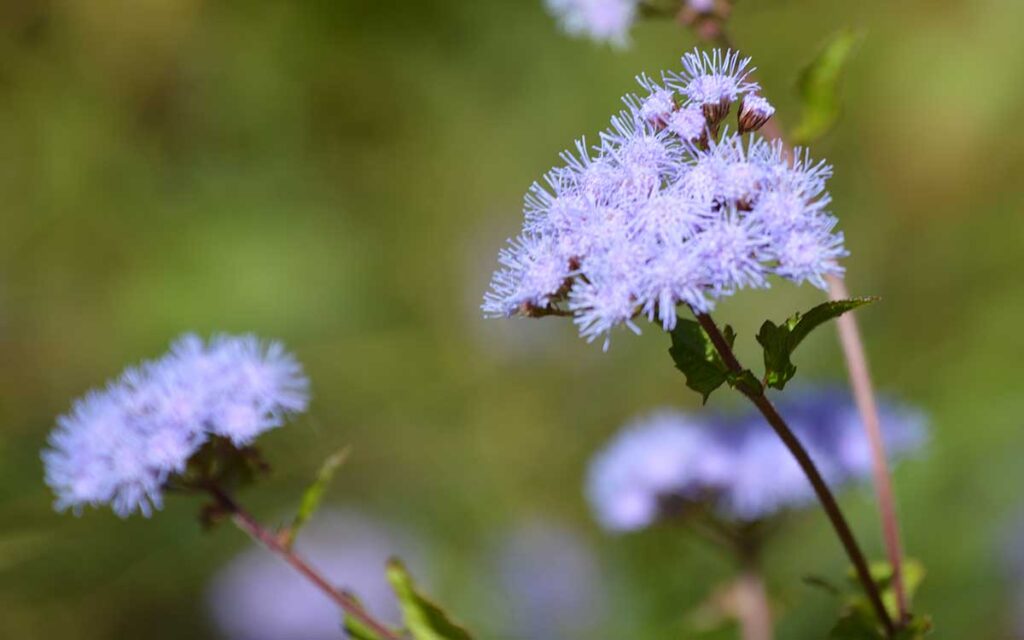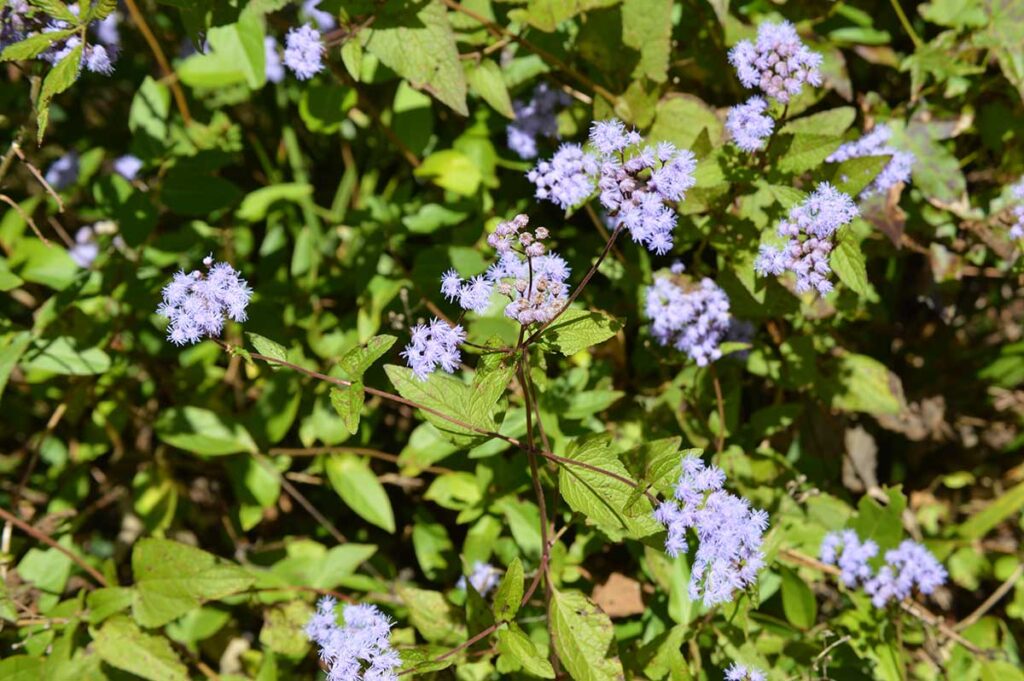In late summer, pockets of lavender color begin to appear along the sides of roads, at the edge of streams, in old fields, and in wetlands or other moist-soil areas. These fuzzy lavender-colored flowers belong to the blue mistflower, also known as wild ageratum, a plant native to the central and southeastern U.S.
Adding blue mistflower (Conoclinium coelestinum) to your garden will bring some fall color to your landscape. Mix it with other fall flowering plants with red, white, or orange flowers for an eye-catching color combination.

Growing Conditions for Blue Mistflower
Blue mistflower can be grown in part-shade to full sun planted in average to wet soils that drain well. It grows best in well-draining, moist soils, and full sun. In part-shade conditions, it will likely have fewer flowers. This plant is hardy in USDA Zones 5 to 10.
Bloom Time
The small fuzzy flowers of blue mistflower cluster at the end of tall 1- to 2-foot-tall green stalks. Blue mistflower begins to bloom in mid- to late summer and will continue to bloom until the first frost in fall – generally from July to November.
Plants growing in part shade may continue to bloom after the first frost as they get some protection from the surrounding plants; it depends on how low the temperature drops.
Plant Growth
This native plant can grow up to 3 feet tall. You can prune it back in late summer if you want to keep it shorter and bushier. Blue mistflower spreads by rhizomes as well as seeds. To reduce the production of seeds, trim the plant back after the flowers are over and dispose of the seedheads.

How to Propagate Blue Mistflower
You can get new blue mistflower plants by dividing your existing plants in early spring. This plant spreads by rhizomes, so you should get plenty of new flowers without even trying. You’ll want to choose your planting site to accommodate the spreading by rhizomes so that it doesn’t outcompete nearby plants.
If you want to grow plants from seed, sow them in the late fall, so they experience a cold season before germination. To save the seeds for planting in the spring, you will need to store them in the refrigerator for around three months in a sealed plastic bag with a moistened paper towel.
You can also grow new plants by taking cuttings from the plant in late spring. Take a 6-inch long cutting from the green stem of the plant. Remove the leaves from the bottom four inches of the cutting. Dip the cut end into water, then rooting hormone, and press it into potting soil in a small pot. Keep the soil in the pot moist but not wet. It may take several weeks for roots to form. You can gently tug on the cutting after a few weeks to see if roots have begun to develop. Then, plant the cutting in the spring, after the first frost.
Wildlife Benefits
Butterflies and bees are attracted to blue mistflower and feed on the nectar. It is also a food source for native bees. Songbirds feed on the seeds of this plant. Blue mistflower is relatively deer-resistant and rabbit-resistant. It’s pretty low maintenance – making it a great pollinator plant.
Conclusion
The fuzzy purple flowers of the native blue mistflower create a sea of color in late summer through fall that attract butterflies, bees, and other pollinators and can be a welcome addition to your garden.
